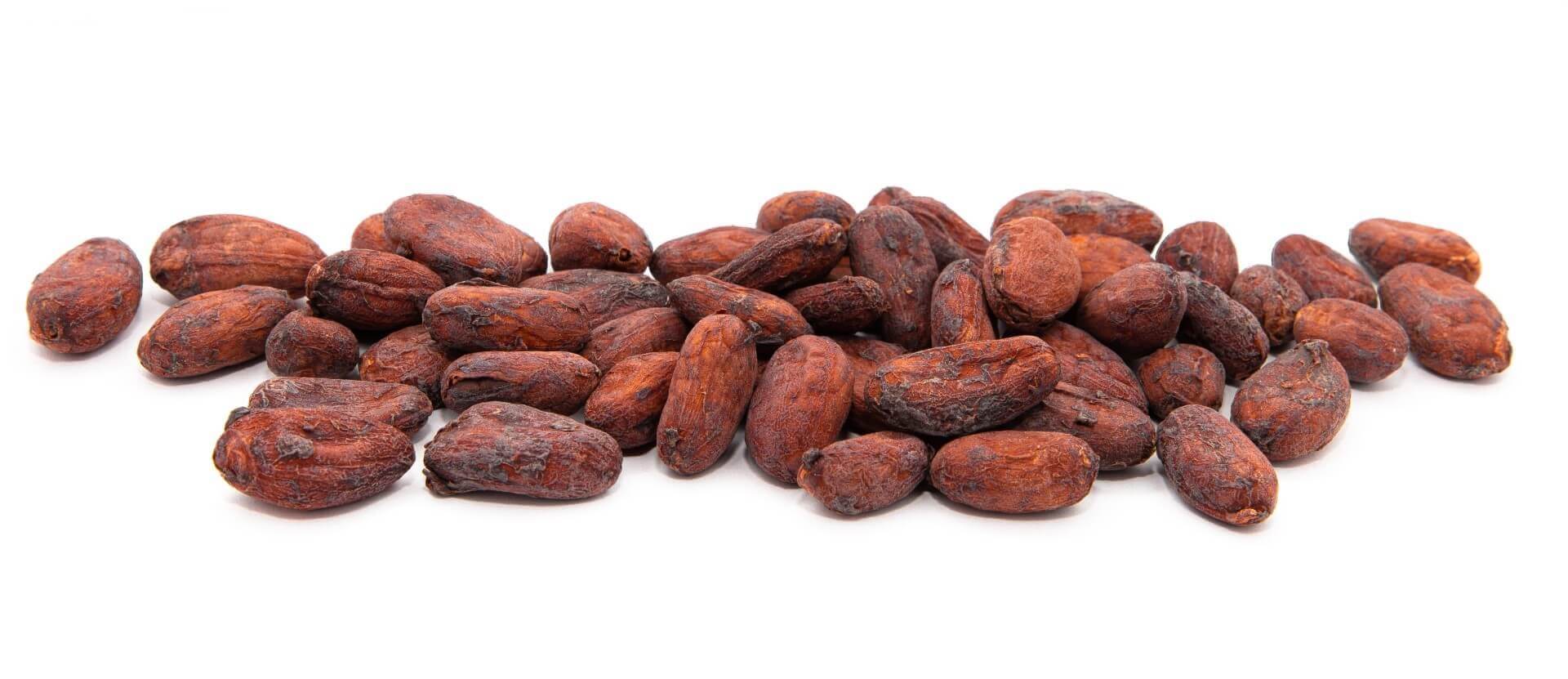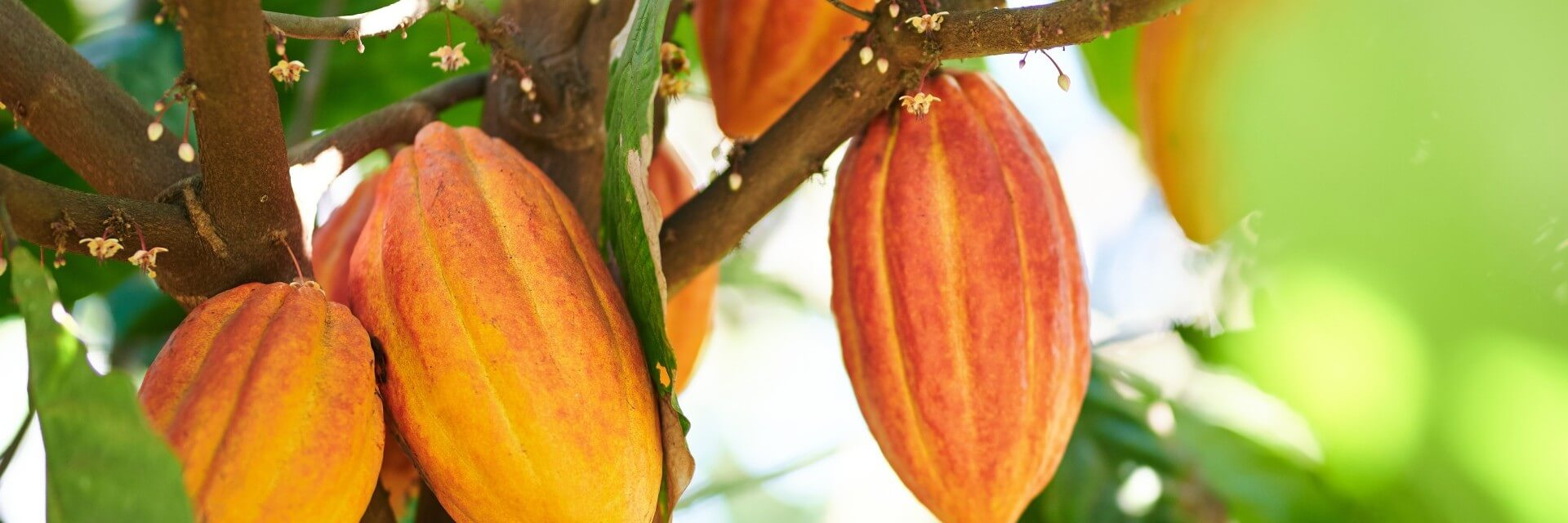
Origin: Philippines (Mana)
Our dark chocolates are produced using cacao from Mana.
Location: Davao Region, Mindanao, South Philippines
Producer: Auro
Importator: Silva Cacao
100% traceable supply chain. Wet beans are sourced directly from individual farms and processed in a central post-harvesting facility. Cacao beans are packed in 50 kg polypropylene bags and transported to the port of Davao.
Smallholder farmers and their families benefit from increased and diversified income due to higher prices and continuous technical support. Promoting intercropping, agroforestry and organic farming, which helps to increase biodiversity and protection of remaining forest fragments. Mount Apo National Park is close to the farms.
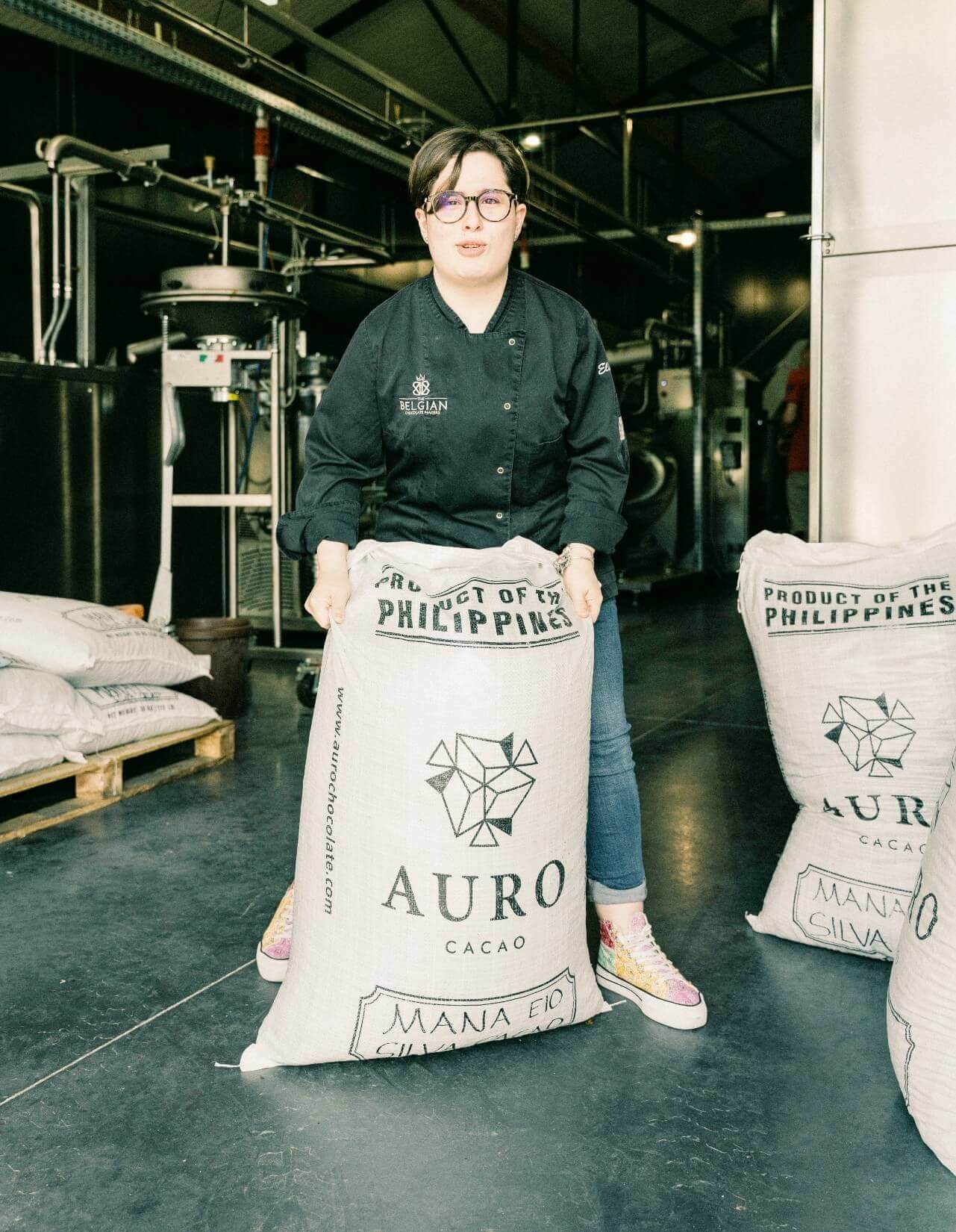
Cacao trees grow all over the Philippines with its peak season commonly expected around October to January, and a mid-season that occurs during April to June. But did you know that the chocolate has been enjoyed by Filipinos since more than 300 years ago?
The region of Davao is an agriculturally rich area in Mindanao. A lot of the Philippines’ best agricultural products such as mangosteen, durian, banana, and mango can be found here, including cacao. Davao del Sur is where our cacao journey started. Our cacao producer first set foot in the area in 2015 to meet farmers that would share our vision to create fine quality cacao. With this great partnership, we have applied a premium price that would significantly improve their income. Most of the farmers we have met during this time still remain as valuable partners to this day.
The farming communities that our producer work with are from different areas of Mindanao with unique cacao varieties that offer diverse flavor profiles. Most of our partner farmers are generally located in Davao del Sur, including the baranggays (towns) of Saloy and Paquibato, the pioneers of our single-estate origins.
A true flavoursome limited edition cacao
Davao is located in the southeast of Mindanao, the second biggest island of the Philippines in the southern part of the country. The region's climate is characterized by high humidity, tropical temperatures and a lot of rainfalls, there is no real dry season. These favourable climatic conditions, combined with the fact that Davao is located outside of the typhoon belt, make it possible for cacao trees to thrive. And they do thrive! Davao region counts for 80% of total Filipino cacao production, and the region's capital Davao City has been dubbed as "cacao capital of the country".
There is considerable potential to grow high quality cacao: beans from Davao were selected as among the best in the world at the International Cocoa Awards in Paris. However, despite the favourable conditions for growing cacao and the righ quality potential, specialty cacao from the Philippines is still rare. We are really proud to use the Auro Mana cacao beans to produce our dark chocolates.
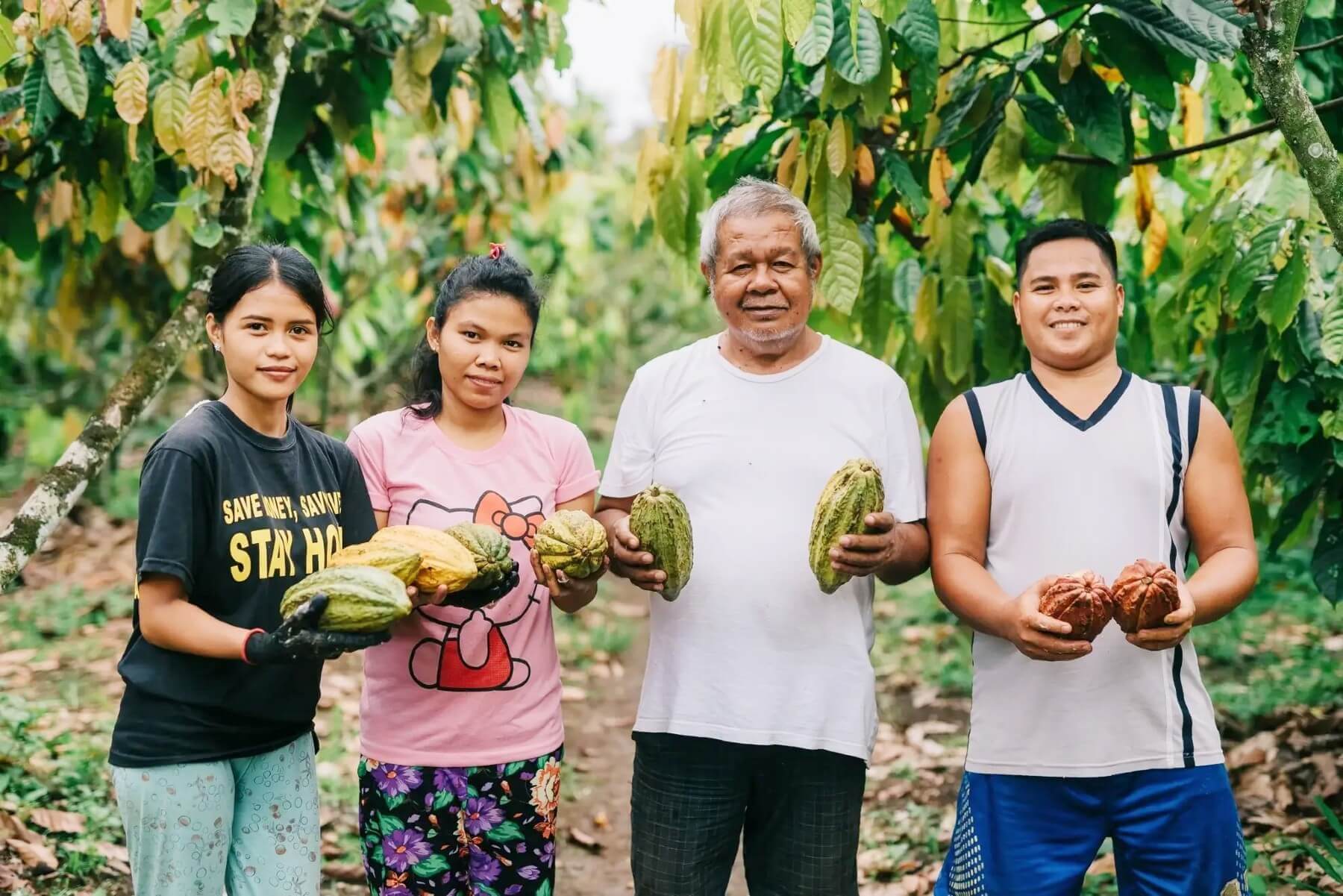
Conservation and landscape restoration
Until 2005 logging of native forests was rampant in the Philippines. Today only a quarter of the forests that once covered the country is still standing. This resulted in fast environmental degradation and a dramatic loss of biodiversity. Mana cacao grows in an agroforestry system, in which cacao trees are intercropped with fruit trees like coconut and durian. This is a major step forward from monoculture plantations. Agroforestry promotes biodiversity and creates a protective buffer zone for remaining forest fragments.
The farms supplying Mana cacao are close to Mount Apo National Park, which is home to diverse flora and fauna, including birds and orchids that are endemic to the region. Together with the producer Auro and the importator Silva, we are joining forces with conservation and landscape restoration initiatives to maintain and increase the rich biodiversity of the Davao region.
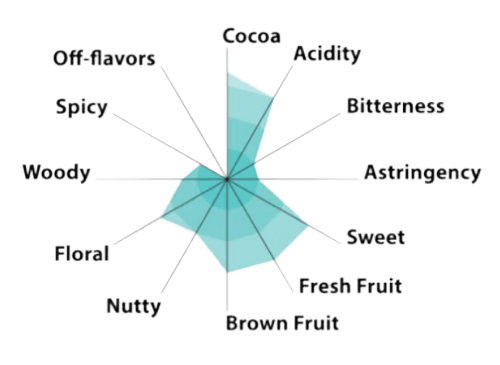
Five selected bean varieties
The word "mana" in Filipino means "inheritance". Our producer have named our blend as such as the community we source it from, Saloy, Davao, are primarily made up of generations of cacao farmers with a rich history. The beans from their farms have rich flavors of purple flowers, cherries, rum, caramelized apple, sweet banana, sweet pumpkin, and cashew apple.
Mana cacao consists of five selected bean varieties. It has a balanced profile with a surprising explosion of flavours, starting with soft cacao with dried fruits, followed by sweetness, almond paste and roasted nuts, finishing with pleasant fresh floral notes and bergamot.
The main cacao harvest season is from October to February. Farmers harvest only fully ripe pods and extract the wet beans on the farm. These are collected the same day and transported to Auro's central fermentation facility. The beans are fermented in wooden three layer cascading boxes that allow drainage of pulp and passage of air. Fermentation lasts 4 days. The fermented beans are then placed on covered drying beds until moisture levels are reduced to less than 7.5%. It is a natural and slow process, taking between 8 and 10 days.
The cacao beans are then carefully selected, packed in 50 Kgs polypropylene bags, and shipped directly from the port of Davao City to chocolate makers around the world including The Belgian Chocolate Makers.
Facts and figures
- 100% traceable supply chain
- Farmers sell wet beans to central fermentary
- Exported from Davao City
- Premium prices, technical support and training
- Conservation of biodiversity through intercropping
Chocolate culture and farmers
Cacao arrived in the Philippines in 1670, when a Spanish ship sailing the Acapulco-Manilla Galleon trade route brought a special surprise from Mexico: some cacao seeds from the Criollo variety. The country was the first in Asia to grow cacao. Production levels reached 35.000MT by 1990 but declined due to pests and diseases, aging trees and substitution by monoculture banana and palm oil plantations.
Mark O'campo and Kelly Go started Auro in 2015 with the aim to revive the Filippino chocolate culture, focusing on premium quality and heirloom varieties. A field expert, frequently visits the farmers to help with good agricultural practices, harvesting techniques, organic farming and combating pests and diseases. The cacao quality has increased considerably and the farmers receive premium prices for their beans.
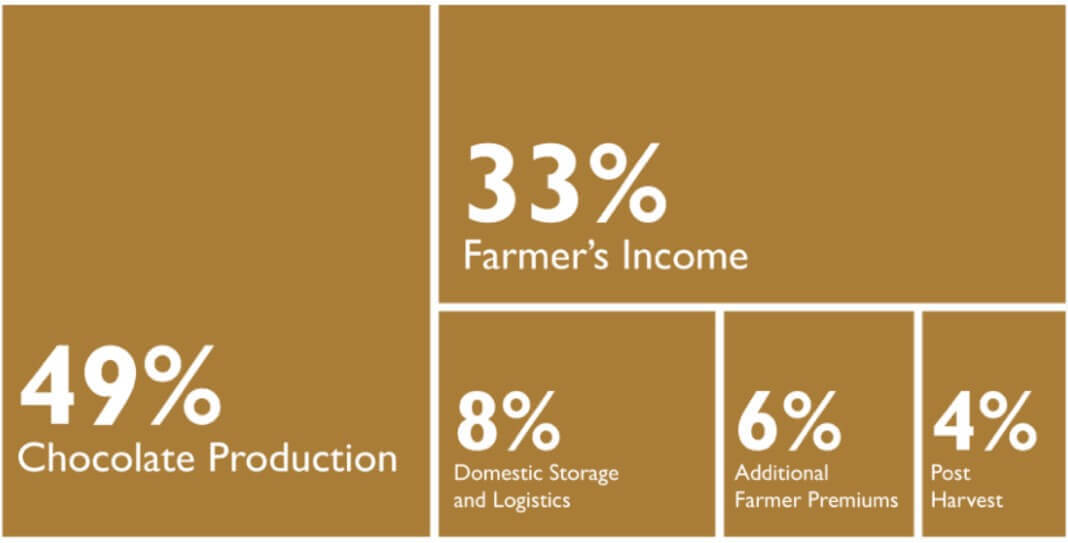
A considerable portion of the production costs is allotted to pay the farmers.
Right now, 39% of the total costs in the production of the beans, including additional premiums, goes to the farmers!
Right now, 39% of the total costs in the production of the beans, including additional premiums, goes to the farmers!
One of the communities we work with is the town of Saloy. Situated between tropical mountain forests, Saloy is a small community in Davao nourished by the fresh spring water flowing through its lush farms. It is part of an agricultural region in the Philippines wherein farming of cacao, copras (kernel of the coconut), and a variety of local fruits and vegetables are the main livelihood sources.
Here in Saloy, our partners have formed a people’s organization called Saloy Organic Farmers Association (SOFA) to coordinate their efforts to convert to organic farming practices. They are a part of one of our producer's community programs, the Organic Certification Program (OCP), where Auro Chocolate assists them in their organic conversion by providing training, inputs, and sponsorship of the certification fees. Together with SOFA, they are hopeful to obtain the organic certification by 2023.
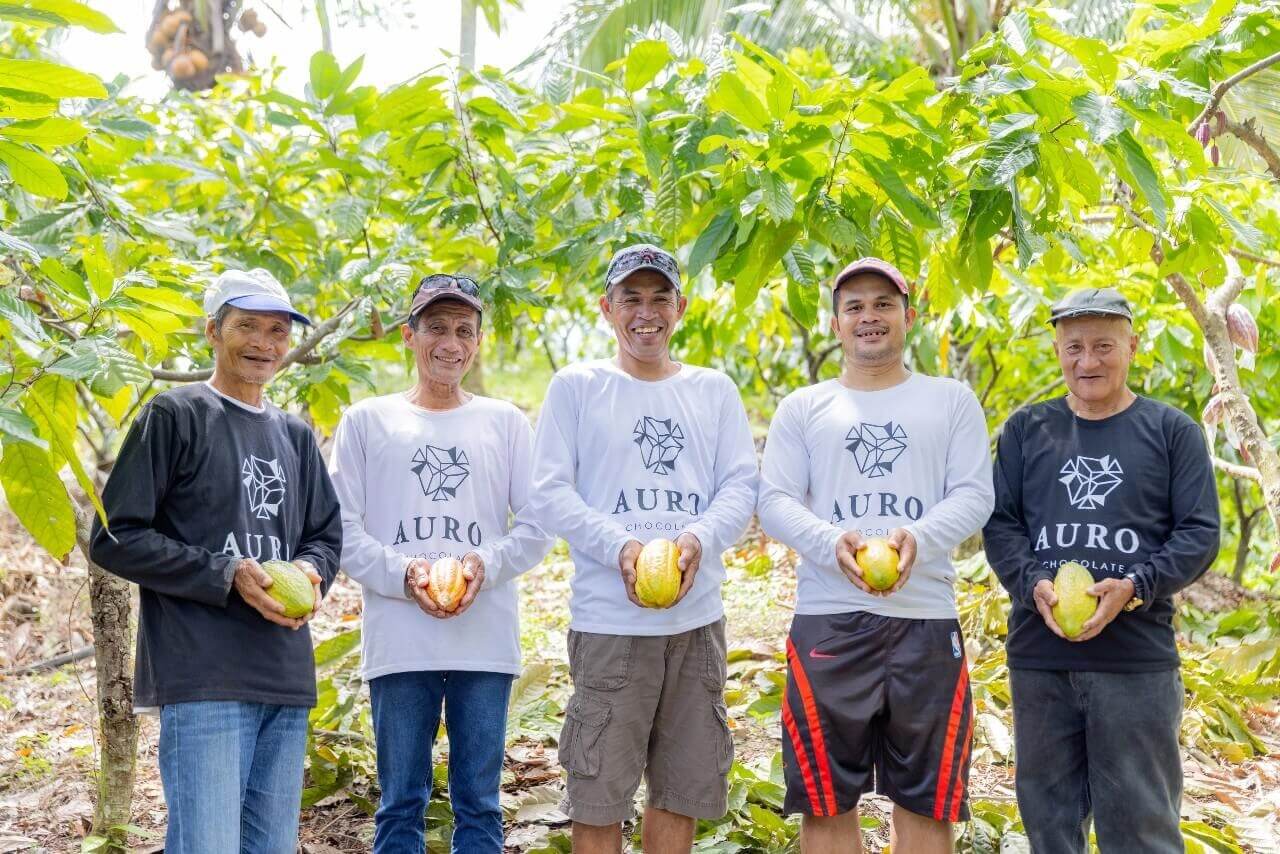
Actual needs of our farmers
Actually, the primary needs expressed by the farmers are road and access to market, access to water, proper drainage, access to hospitals and clinics, and network connectivity. Being able to understand these needs and how we can play a role in alleviating or addressing them is the next step for Auro, our cacao producer.
If you wish to get a full report about Auro chocolate, click here to read their sourcing report 2022.
We are conscious of our role to improve the quality of life of the farmers
Beyond the programs of our cacao producer in Philippines, we aim to understand our impact on our partner communities by measuring the amount we pay or the amount received by our partner farmers. Auro also conducted a survey to get to know their available resources and their accessibility to basic needs. This has given us valuable insights on how we can move to assist them and to also form our first sourcing report.
We hope to be able to identify ways we could improve and assist in improving the quality of life of our partner cacao farmers. As a chocolate social enterprise, we grow conscious of our role to improve the quality of life of our partner farms and in supporting or initiating efforts to protect and preserve the environment.
